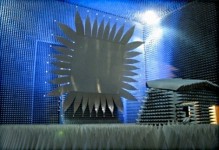
On 9 July BAE Systems announced it had commenced work on the ‘Cross Deck Initiative’ to transfer subsystems from the US Air Force’s Lockheed Martin EC-130H Compass Call Electronic Warfare (EW) aircraft onto new Gulfstream EC-37B platforms: an initiative which the firm is jointly pursuing with L3 Technologies.
According to an official announcement on BAE Systems’ website the company “will re-host the EC-130H’s mission equipment onto a higher-performing aircraft.” The performance improvements of the EC-37B vis-à-vis the EC-130H, BAE Systems continued, will be seen in the higher altitudes, longer ranges and higher cruising speeds. As a means of comparison open sources note that the EC-130H has a flight ceiling of 25,000 feet/ft (7,600 metres/m) compared to the 51,000ft (15,545m) of the Gulfstream G-550 business jet upon which the EC-37B is based. Similarly, the EC-130H has a range of 2,295 nautical miles/nm (3,694 kilometres/km) as opposed to the 6,750nm (12,501km) of the G-550 while the cruising speed of the EC-130H is 258 knots (478 kilometres-per-hour) as opposed to the 459 knots (850 km/h) of the G-550. BAE Systems’ information continued that the EC-37B airframe will be based upon the G-550 Conformal Airborne Early Warning Aircraft (CAEW). This design has been developed by Gulfstream’s Special Missions Aircraft department. This aircraft, which has been outfitted with Israel Aerospace Industries’ EL/W-2085 L-band (1.215 gigahertz/GHz to 1.4GHz) and S-band (2.3GHz to 2.5GHz/2.7GHz to 3.7GHz) airborne early warning radar equips the Israeli Air Force, and its Italian and Singaporean counterparts. In the Signals Intelligence (SIGINT) domain, the Royal Australian Air Force is acquiring a pair of G-550s configured for this mission with L3 Technologies leading the effort. It is entirely possible that these planes will carry a variant of the USAF’s Boeing RC-135V/W Rivet Joint SIGINT mission fit. Read more
Source: www.crows.org



